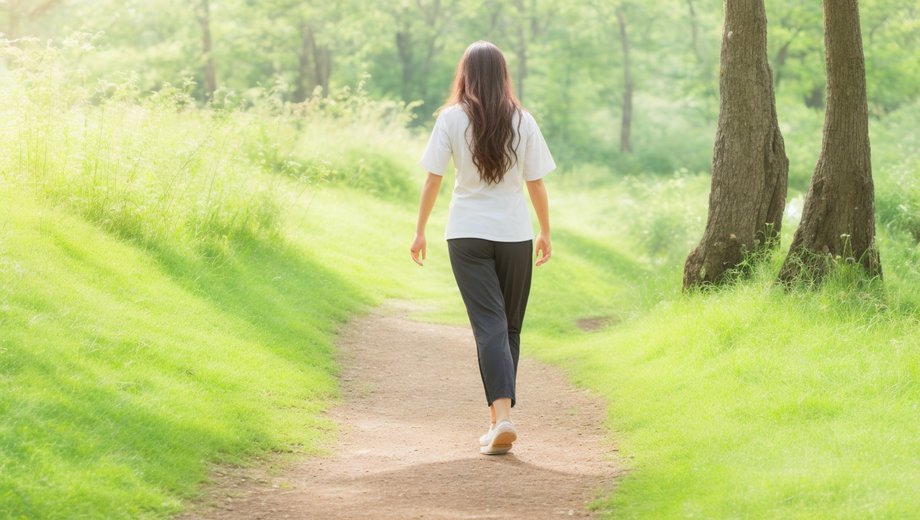The Art of Walking Meditation: Techniques for Mindful Movement

Are you looking for a way to add more mindfulness to your daily routine? Look no further than the art of walking meditation.
With its benefits of increased focus and reduced stress, this practice can help you find peace and clarity amidst the chaos of everyday life.
In this article, we will explore various techniques for mindful movement, from breathing techniques to grounding and cultivating awareness.
Get ready to bring mindfulness into your steps and experience the transformative power of walking meditation.
Key Takeaways
- Walking meditation is a beneficial form of physical exercise that promotes cardiovascular health and fitness.
- It can help reduce stress, promote relaxation, and increase focus and mindfulness.
- By connecting with the earth and being present in the moment, walking meditation can bring a sense of peace and inner clarity.
- Practicing walking meditation allows for the cultivation of awareness of sensations, thoughts, and emotions, leading to a deeper understanding of oneself and responses to different situations.
The Benefits of Walking Meditation
Walking meditation offers a variety of benefits for both your mind and body. It is a form of physical exercise that allows you to stay active while also practicing mindfulness. As you walk, you engage your muscles and get your heart rate up, promoting cardiovascular health and overall fitness.
Additionally, walking meditation is known for its stress reduction properties. It allows you to focus on the present moment, letting go of any worries or anxieties. As you take mindful steps, you become more aware of your surroundings and the sensations in your body, helping you to relax and find inner peace.
Finding Your Rhythm: Breathing Techniques for Mindful Walking
Take a moment to focus on your breath, finding a rhythm that allows you to stay present during this mindful activity. Breath awareness is a powerful technique for grounding yourself while walking.
As you take each step, pay attention to the sensation of your breath flowing in and out. Notice the rise and fall of your chest, the feeling of air entering and leaving your body. This simple act of tuning into your breath can help calm your mind and bring you into the present moment.
Another technique you can try is a body scan. As you walk, bring your attention to different parts of your body, starting from your head and moving down to your toes. Notice any sensations or tensions you may be holding. By doing a body scan, you can become more aware of your body and release any physical or mental stress you may be carrying.
Grounding Yourself: Techniques for Connecting With the Earth
By focusing on your breath and paying attention to the sensations in your body, you can cultivate a sense of connection with the earth. Grounding yourself is essential for deepening your nature connection during walking meditation.
One effective technique is earthing, which involves consciously connecting your body to the earth’s energy. As you walk, allow your feet to make contact with the ground, feeling the texture beneath you. Visualize roots extending from the soles of your feet, anchoring you to the earth.
With each step, imagine drawing up energy from the earth, replenishing your own energy. As you continue your walking meditation, notice how this connection with the earth enhances your sense of presence and inner stillness.
Embrace the grounding techniques to strengthen your nature connection and experience a deep sense of harmony with the earth.
Cultivating Awareness: Techniques for Noticing Sensations and Thoughts
As you cultivate awareness, notice the sensations and thoughts that arise in your body and mind. Pay attention to your emotions, focusing your attention on how they manifest physically and mentally. This practice of noticing can help you develop a deeper understanding of yourself and how you respond to different situations.
To assist you in this process, here is a table that outlines the possible sensations and thoughts you may encounter during your practice of cultivating awareness:
| Sensations | Thoughts | Emotions |
|---|---|---|
| Tingling | Wandering mind | Excitement |
| Tension | Planning future | Anxiety |
| Warmth | Replaying past events | Happiness |
| Relaxation | Judgmental thoughts | Frustration |
Integrating Mindfulness Into Everyday Life: Tips for Bringing Walking Meditation off the Cushion
To fully incorporate mindfulness into your daily routine, you can bring the practice of walking meditation into your everyday movements. Walking meditation is a simple yet powerful way to cultivate presence and awareness as you move throughout your day.
Here are some tips to help you maintain focus during walking meditation and incorporate it into a busy schedule:
- Start with short sessions: Begin with just a few minutes of walking meditation and gradually increase the duration as you become more comfortable.
- Find a quiet space: If possible, choose a quiet and peaceful location for your walking meditation to minimize distractions.
- Engage your senses: Pay attention to the sensations in your feet, the movement of your body, and the sounds and smells around you.
Frequently Asked Questions
How Long Should a Walking Meditation Session Typically Last?
A walking meditation session typically lasts anywhere from 10 to 30 minutes. It depends on your preference and availability. To maximize the benefits, find a peaceful location, maintain a steady pace, and focus on your breath and surroundings.
What Are the Different Types of Walking Meditation Techniques?
There are different types of walking meditation techniques that you can explore. By incorporating walking meditation into your daily life, you can cultivate mindfulness and experience the benefits of mindful movement.
Can Walking Meditation Help Improve Physical Fitness?
Incorporating walking meditation into your fitness routine can have numerous benefits. It can improve your physical well-being by increasing flexibility, balance, and cardiovascular endurance. Plus, it’s a mindful way to stay active.
Are There Any Specific Locations or Environments That Are More Conducive to Walking Meditation?
Certain locations or environments can enhance your walking meditation experience. Tranquil natural settings, such as parks or forests, offer a peaceful atmosphere conducive to mindfulness. These specific locations can amplify the benefits of walking meditation.
Is It Necessary to Be Completely Silent During a Walking Meditation Session?
No, it’s not necessary to be completely silent during a walking meditation session. Incorporating music can enhance the experience and help you maintain focus. It’s all about finding what works best for you.








